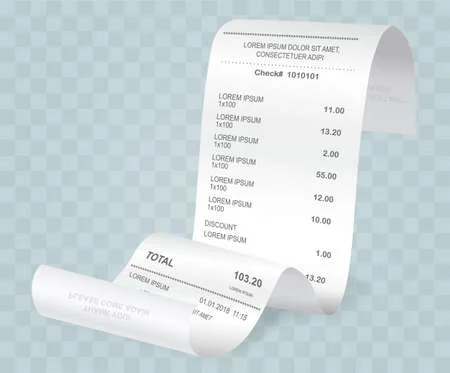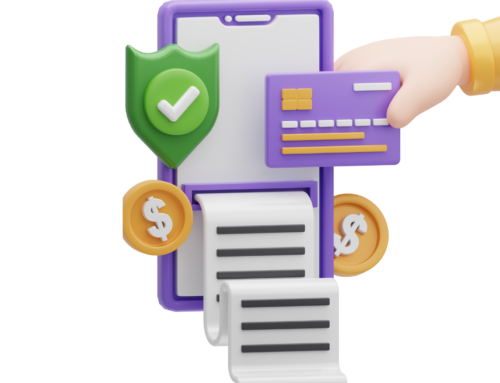the value of these transactions is expected to reach a mind-boggling $1.82 Trillion. As a result, credit card receipts will account for a sizable portion of firm invoicing.
If you own a business, you know how rapidly signed receipts may accumulate. It may be tempting to get rid of them soon, but don’t. The question then becomes, how long do you keep credit card receipts? Here’s all you need to know about holding periods, proper storage, and disposal. Let’s see whether you’re doing it correctly.
How Long Should You Keep Customer Credit Card Receipts?
Receipts are “proof of sale,” which leads to the two main reasons why firms should keep them. These two factors also influence how long you should preserve the receipts.
1) Dealing with Chargeback Disputes
Up to 18 months is expected to be held.
Customers are well aware that banks allow them to request chargebacks. A merchant should also be aware that the timeframe for filing chargebacks can range from 60 days (2 months) to 540 days (18 months), depending on the issuing bank and credit card provider.
In such a circumstance, the signed receipts serve as evidence that the customer agreed to the purchase. The receipt proves that you were given the card on which you put all of their personal information at your POS terminals. The funds were only then sent to the merchant account. The bank can then compare the signatures on the receipt to those on file for their customers. If it matches, it proves that the purchase was done with the cardholder’s knowledge.
False chargeback requests are denied in light of these facts, ending the issue.
2) Assist with Tax Claims
Holding Period: At least three years
Receipts are invoices that demonstrate that the sales occurred. If your company is audited by the IRS, you will almost certainly be required to present proof of a specific questionable transaction. The IRS requirements may differ depending on your location and local tax laws. However, it is a good habit to save signed receipts for three years.=
Assume you are audited and have no receipts. In that circumstance, justifying the income from specific transactions, any information relating to them, and the subsequent tax return becomes problematic. In the worst-case situation, you could be dealing with tax evasion.
The Perplexing Case of Credit Card Receipt Storage and Management
Your company recognises the importance of preserving signed receipts and is prepared to commit. However, there are a few things to bear in mind when it comes to credit card receipt storage and administration.
1) Handle With Caution
Customer Privacy Protection
Credit card receipts are more than just “proof of sale”; they contain important information about the consumer, such as their name, final digits of the card number, bank name, and signature. These are private records that must be protected by law.
Avoiding Financial Fraud
Aside from privacy problems, inadequate credit card receipt preservation might result in financial information being shared with unwanted parties. This may expose clients to money theft, which may result in long-term lawsuits and reputation loss for the merchant. It may even result in the closure of a small business that has the capacity to contest such accusations.
2) How Should Receipts Be Stored and Disposed of?
Receipts contain personal and financial information, so there are federal requirements in place to properly handle and delete them.
Physical
The sheer bulk and fragility of the receipts make them difficult to store. A merchant should keep them locked away in a cabinet or room. These records are only accessible to authorised personnel. Furthermore, you must guarantee that the credit card receipt is not damaged as a result of water, fire, or any other cause.
Businesses should either thoroughly shred or burn the receipts to destroy them. While it may appear simple, it is difficult for a corporation, especially a small one, to devote such resources to monitoring one sort of transaction. Businesses should consider these factors before determining how to store their receipts.
Digital
Businesses must guarantee that receipts are stored in an encrypted manner for digital storage. Access to these data, like physical storage, must be limited.
To be disposed of, the digital credit card receipt must be permanently destroyed by a programme. It is critical to note that specialised platforms, such as Wellybox, can securely retain all of your receipts for years. A Google-approved partner examined our privacy and security policies. When necessary, Wellybox can trash all of the selected receipts with the press of a button.
Make Credit Card Receipt Management a priority. Simpler
Cards make the sales process a lot easier. However, businesses frequently overlook the equally important latter half of the payment ecosystem – receipt management. Inadequate storage exposes your company to a variety of hazards, including data breaches, financial losses, lengthy legal fights, reputational damage, and more.
Wellybox software makes card payments absolutely stress-free. You can keep all of your receipts in one place, stop worrying about data security, instantly produce past receipts, rapidly resolve disputes, and destroy them with the click of a button.
Card payments will only grow in frequency and volume over time. So, you may either arrange for more receipt storage or switch to a smarter, no-hassle alternative.
Read More: Digital receipts: the start of a new customer relationship







